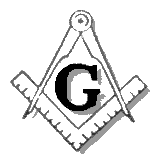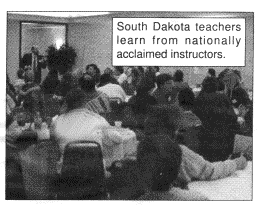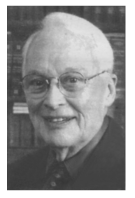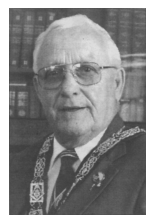|
|
 |
South
Dakota
Masonic program for students at risk
|
Helping
South Dakota schools, children and teens in an age of drugs, violence
and suicide
|
| Yes! |
There
IS a way teachers can learn to recognize kids at
risk for drugs, suicide and violence... |
|
|
|
By Lowell Holmgren
State Secretary, S.D. Masons
Rapid City, SD
|
HURON
-- A national program to train South Dakota teachers to identify and
help students at risk of drugs or violence graduated its second
70-person class the fall of 1999 after a three-day seminar in Huron
Oct. 12 through 14.
The nationally-accredited program hosted 14
school districts at the free accredited training -- including three
districts that participated in the first session in January that sent
additional teachers to expand their crisis intervention team,
according to seminar sponsors.
The seminars are free to teachers and
school districts and are entirely paid by South Dakota Masons,
according to Art Parsons of Watertown, chairman of the program which
now has trained 140 teachers in the state in less than a year.
The first seminar was in the spring of
1999, Parsons said, adding that the first seminar at Watertown
already has brought many schools new intervention teams that have been
working with young people at risk.
Parsons said the nationally-accredited
program originated 16 years ago in Pennsylvania where now every school
building is required to have a teaching team trained in the Masonic
Model Student assistance Training Program.
Schools sending a second
team of teachers to the seminar include Watertown, Deubrook and Sioux
Falls, which Parsons said is a testimonial to the program's
effectiveness.
"Although Sioux Falls and Watertown are
in larger communities where you might expect more concern,"
Parsons said, "The fact that Deubrook also has signed on for a
second seminar shows smaller schools recognize that these aren't just
problems in our cities."
|
He said, "It's easy for kids to get lost in the darker areas of
society when a child is under stress from neglect or abuse or from
psychological problems.
"Some commit suicide, some try to hit
back at the community that causes their pain -- as shown in recent
headlines about gang warfare and bizarre shootings."
|
 |
|
|
He Added, "When
this was first developed, Pennsylvania schools wanted the program,
but didn't have funding for the teacher programs. Masons there
took up the cause as a community project and it has since been
emulated all across the country."
"It has grown because teachers and
school administrators see it succeeding in identifying problem youth
and helping design intervention programs for specific kids even before
teachers complete the entire seminar, " he said.
"There are many children at risk in our
communities from the most affluent to the most impoverished
homes," Parsons said.
"The state's Masons are proud to be the
spark to get this proven preventative program going in our state as
one of the most effective ways to keep students on course to a
productive adulthood," he said.
|
If
your school district may be interested in having
access to this FREE teacher training program, or
want to learn more how you can help this proven
program for South Dakota young people,
call our toll-free state hotline:
1-800-462-7661 |
|
|
|
Masons
Look for an answer
and find one
|
|
By Del Ripley
Head of S.D.Masons
Gettysburg, S.D.
|
Masons realized there was a growing problem in our state with
our young people using more and more drugs, becoming more
violent. They saw growing teen suicide rates and doing more
self-destructive acts than in the past. Like you, they figured
"somebody else" would find a solution. But in Pierre a
rash of teen suicides startled everyone in the community. In
Rapid City school violence shocked other students, parents and the
whole Black Hills community.
Every other town, large and small,
began to discover they had the same problems with kids feeling that
nobody cared, that nothing made any difference in their lives.
Whether or not a child or teen died, people in every town saw there
had to be a way to find what kids were most at risk for acting out the
way they felt...
|
|
Masons stopped believing "somebody" would
help. They started to believe they had to do
something. Strangely the answer was found from other
Masons, the Masons of Pennsylvania. Education experts in
Pennsylvania saw the same problems we have in South Dakota today
-- but because of bigger towns, the problems were obvious 15
years ago. |
|
|
How
can we help young people in an age of drugs, violence, and
self-destructive behavior?
|
|
|
The experts developed a program for Pennsylvania public
schools. Other educators saw it was a good, common sense
program they should have. But there wasn't the money
in state government to teach the state's teachers how to
recognize kids with these problems -- and then how to help these
young people find healthy ways to find themselves in their
communities. |
|
| Who
would pay? Pennsylvania's Masons heard about the
program and the need for cash to put the idea into
reality. They stepped up, raised the money and told the
state education department they would support the program. It
worked. It still works. Now every school building in
Pennsylvania has a team of teachers trained in this
"Masonic Model Student Assistance Training Program." |
|
|
|
|
South Dakota Masons found their answer -- and put their ideals
into action with the funding to make it work. South Dakota
schools large and small responded. Now the Masons here are
continuing to work to see the program work. But to make things
go faster, even more funding could bring more classes... and help more
kids. |
|
|
Why
do
South Dakota Masons help
these kids at risk? |
 |
|
By Art Parsons
Director, MMSAP
Watertown, SD |
|
|
Like most South Dakotans, I had the freedom to grow up in a
rural community. And like most adults, I put most of my life
into my work. Like most Americans, I was bothered by the way
drugs and other self destructive acts seemed to be a growing problem
for our young people.
But like my neighbors, including other
Masons, I didn't have the slightest idea what I could do about
it. At church we would talk about more kids using drugs or
committing suicide. We talked over coffee about kids being so
much more violent than when I was growing up.
When I was asked to be on a new South
Dakota Mason's committee to investigate a program proven successful in
Pennsylvania -- where I grew up -- I said, "Yes, I'll do
it." What our committee saw was a program that works.
We saw it work in California and a dozen other states. And we
saw Masons leading the way to pay for it.
Masons helped start the first public
schools in America. Now we saw in South Dakota we could do
something just as important: We could lead the way to answering a new
problem in education. We started the program. It
works. South Dakota teachers tell us it works. That's why
it's got to stay.
|
|
|
| How
do the programs Masons brought to South Dakota work for kids? |
|
|
|

Burt Seifel
|
Ask police juvenile officer
Burt Seifel |
|
By Milo Dailey
Head of Dakota Lodge of Masonic (Historic) Research
Watertown, S.D. |
|
WATERTOWN, S.D. --- After more than 15 years of law enforcement ---
four as a juvenile officer -- Burt Seifel found a new way to look at
kids and their problems with the Masonic Model Student Assistance
Training Program.
Since the first South Dakota class was in
Watertown, Seifel was one of the first to register. His work
with young people already included no only being a D.A.R.E. officer
teaching kids the problems that come from using drugs, but also
teaching other officers how to teach the program to the kids.
He's a D.A.R.E. Mentor with a statewide
reputation. Still, Seifel said, the MMSAT is a tool he wishes he
had known about earlier to help him help kids. "The way
that it can do that is that it goes outside of the academic field that
other programs in schools have used," he said.
Since it takes a broad
view of a young person's problems, the program has taught him and
others how to involve as many resources in the community to help deal
with kids who are troubled or headed for trouble --- and their
families..
Before MMSAT, a teacher generally had few
school resources, a lawman like Seifel had the juvenile court system
--- and parents often wouldn't know where to turn for help with a
child who seemed aimed for problems..
"And,: he said, "the MMSAT program
uses the resources of the community and involves them in the
treating the problems that the kids have as well as the problems that
the parents have in dealing with the kids."
Seifel said, "If a teacher sees a kid
having a problem academically or socially an inability to interact
appropriately with his peers, can refer the student to the MMSAT
team."
Who is the team?
Said Seifel, "That's all of the
individuals who have been trained and know how to do the brainstorming
for the MMSAT program. It includes counselors, administrators,
law enforcement, teachers, and human services personnel -- and anyone
else who goes thru the MMSAT training."
The Idea is to have many viewpoints going
into a study of a young person's problem -- analyzing it and figuring
how to use the best community resource or resources possible to help
the young person and family.
Seifel said the program even has
changed how he handles his daily work with kids. As a
juvenile officer, he works both in school and with young people
wherever they're having a problem --- at home, at the mall or city
park..
"The MMSAT training taught me outside my
law enforcement training how to look at a different set of
resources," he said. Instead of being basically
"alone" with a book full of laws to follow, Seifel said it
taught him how to work with other trained professionals to brainstorm
a problem for a young person before there's a problem that requires
the courts.
"It's how to approach a certain
problem, how to document appropriate information to send along to
another agency to help get the best assistance for the student and
family." It already has helped him help kids --- about a
dozen. "I've used this brainstorming process in trying to
think of different ways to help a kid, made calls and had
conversations with other people ... and that's using the process in
trying to resolve the problem."
"It's just in trying to help kids
and parents find a solution to problems they're having or problems
they're maybe going to have," he said. "You just use a
whole different thought process," he said. "I think
it's done a lot of good. It's gotten kids started in the right
direction sooner than they might have..."
It's more than just something for
schools, he said, but in his profession: "Just not enough people
know about it." He hopes to get other officers involved
when the program returns to the Watertown school district. He
said, "It's a valuable tool. It gets you more involved in
being able to help kids."
"Any law enforcement officer who
is a school resource officer or liaison officer should contact their
school and find out if they have a Masonic Model Student Assistance
Training Program in place --- and then they should go to the MMSAT
training and become part of their team." Although he's a
proponent of the expanded D.A.R.E. drug program, he notes it's a
prevention program. "This is a prevention, intervention and
repair program."
In Watertown schools, he said,
"Due to the size of the district, the MMSAT program is being
gradually implemented and there is a plan to implement the whole
program in the school district." "The gracious support
of the Masonic Lodges and brothers in the state have allowed numerous
people from throughout the local district and in the state to become
trained and assist as part of the team."
"You start something like
this," he said, "Once they see it and get to used it, they
want it and it gets bigger and bigger and you've got to train more
people." |
|
|
From
South Dakota's Senior Mason
|
|
|
|
 |
By Del Ripley
Head of S.D.Masons
Gettysburg, S.D.
|
|
We will continue the Masonic Model
Student Assistance Training sessions and will need to work to raise
additional funds for the upcoming sessions. This is a giant task we
have undertaken.
With all the schools in the state, where large as
well as small are susceptible to the problems of abuses, suicides, and acts
of violence, our presence is needed at all locations.
Every contribution dollar counts.
Several brothers have suggested ways to raise money through this coming year
and into the next.
Masons have "taxed" themselves with a new
per member in their local Lodge dues earmarked for support of Student
Assistance Training will not be a reality until February 2001, so this needs
to be addressed quickly.
We will be talking about fund raising methods at Grand
Lodge Officers meetings and District Masters meetings. The need is
urgent and now!
If you have anything planned that I may be of some
help to you, please contact the Grand Lodge office or my office at
1-800-773-2427. This will be the year of Masons working together to
leave it better than we found it. |
| We Masons
care about our South Dakota youth ... |
| |
| How can
others help? |
| |
| First,
learn about the program for your own school district,
whether you have kids in school or not. |
|
| |
| Second,
consider joining an effort to help schools and other
professionals in heading off disasters for hour kids
before they happen. |
| |
| |
| |
| |
| |
|
|
|
| You
can help make a difference . . . |
|
Contributions
may be made at any time to the Masonic Model Student Assistance
Program. Outright gifts of cash, securities, real estate,
insurance policies or personal property are welcomed in our mission of
helping children in need.
Wills: Designations of bequests
should clearly indicate the South Dakota Masonic Model Student
Assistance Program. Bequests under wills may reduce estate taxes.
Securities: Contributions of
securities are easily accomplished in most cases. If the
securities have appreciated in value at the time of the gift, there
may be additional tax advantages.
Trust agreements: Irrevocable
charitable remainder unitrusts or annuity trusts may be established
for lifetime payments to named beneficiaries. |
After the
lifetime of the surviving income beneficiary, assets could be utilized
for the MMSAT program for its charitable purposes. These trusts
may be useful for some retirement plan assets, such as IRAs.
Insurance: MMSAT can be
designated as both the irrevocable beneficiary and owner of an
insurance policy. Income, gift and estate tax charitable
deductions may be allowed for a gift of an irrevocable life insurance
policy under most state laws.
For additional information, contact:
South Dakota State Masonic Headquarters
1-800-462-7661, toll free in South Dakota
P.O.Box 468
Sioux Falls, SD 57101-0468 |
|
- - - - - - - - - - - -
Print this page, complete, and mail - - - - - - - - - - - - |
Enclosed
is my check for $_____________ as a contribution to the Masonic Model
Student Assistance Program in South Dakota.
Name: _________________________________________________
Address: _______________________________________________
City: ________________________ State: ______ Zip: __________
Make checks payable to S.D. MMSAT
Mail to SD Masonic Headquarters, P.O. Box 468
Sioux Falls, SD 57101-0468 |
|